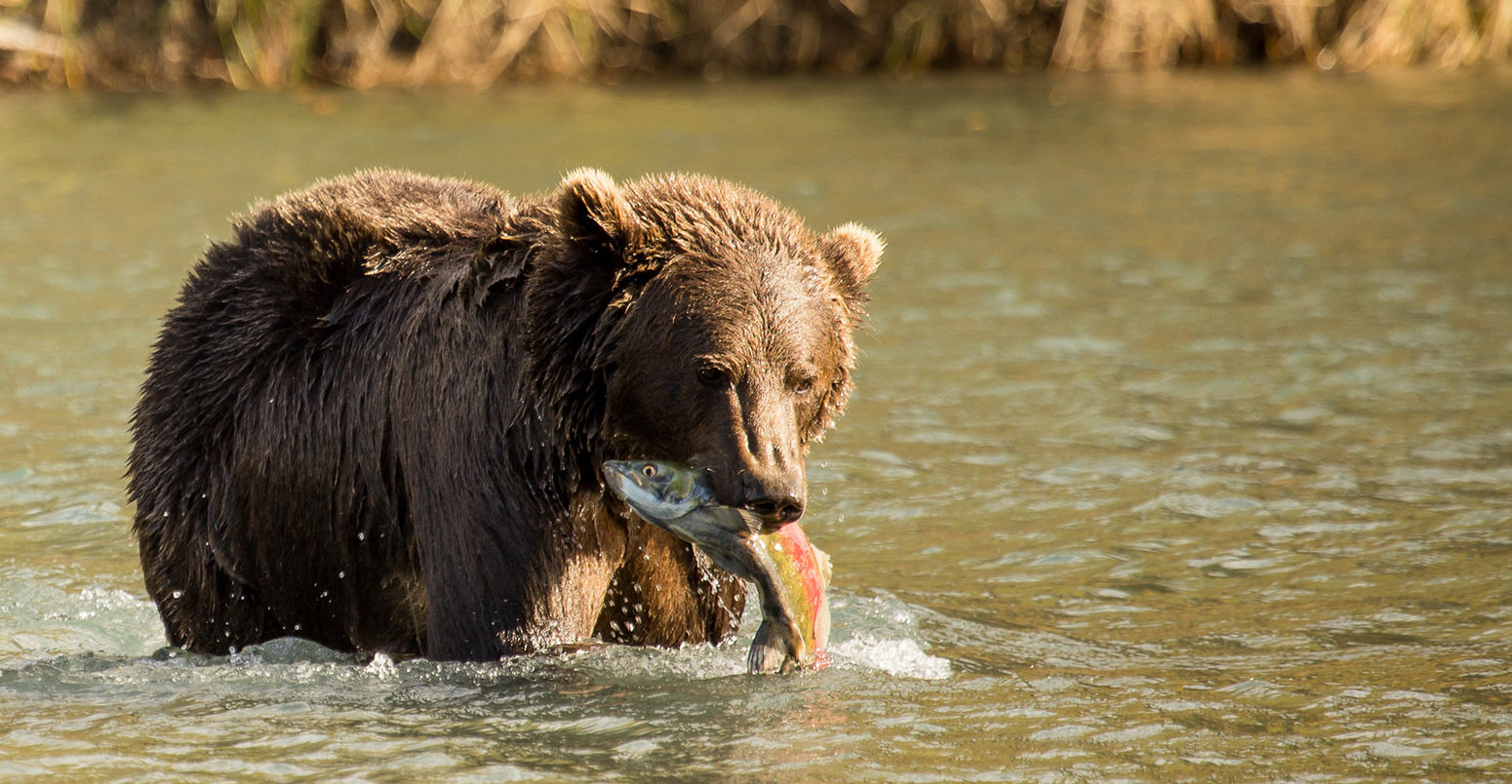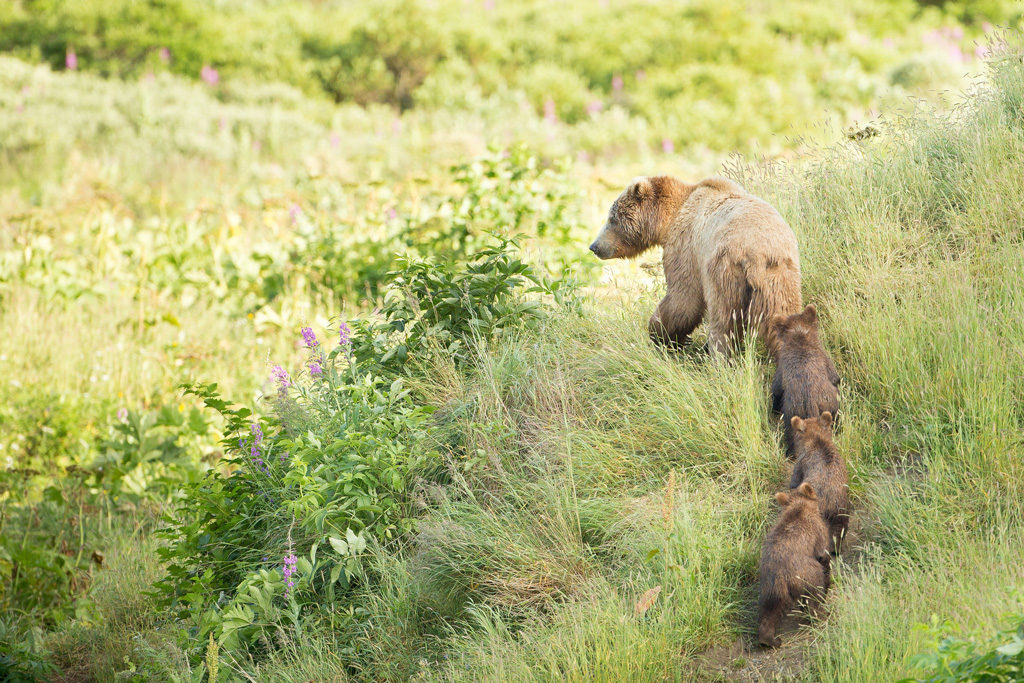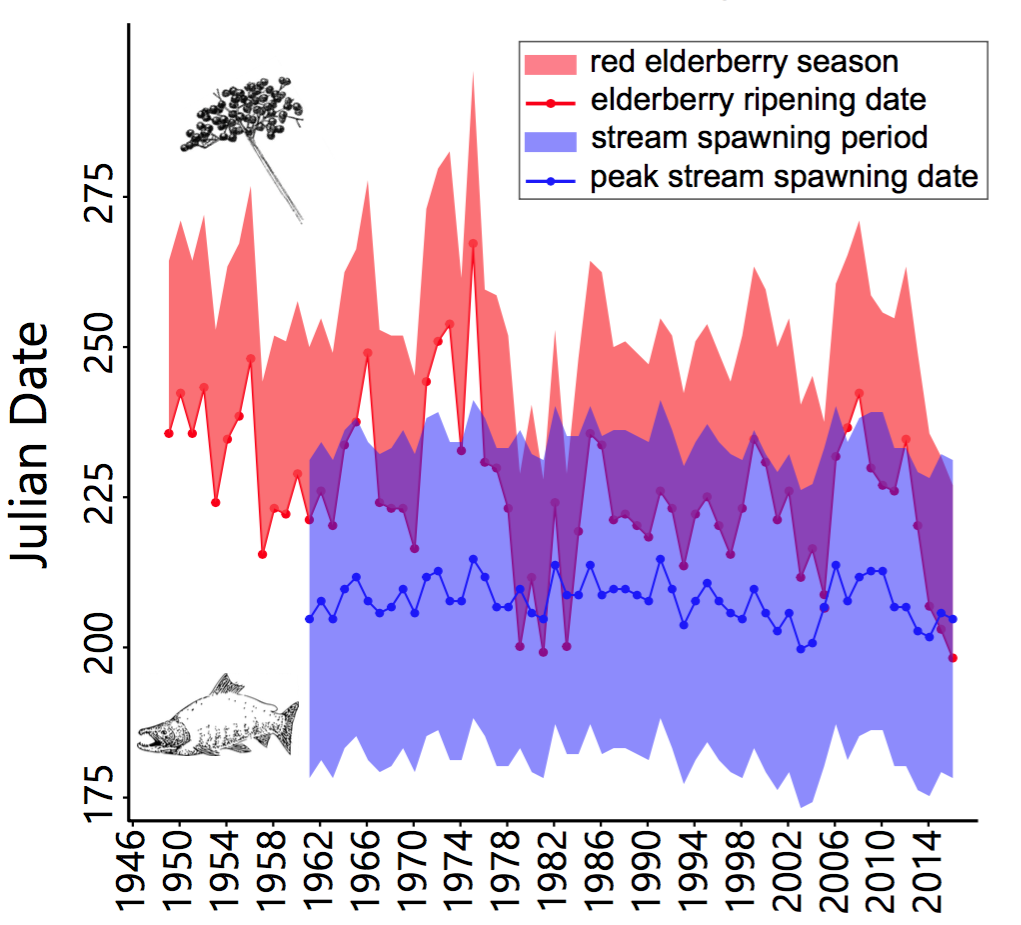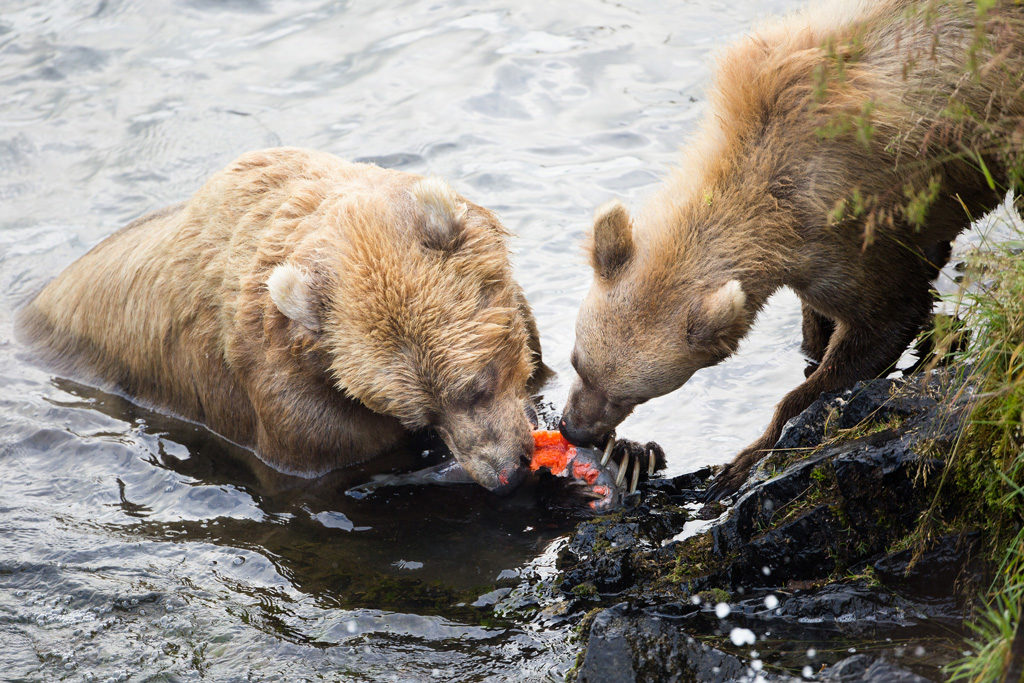
Climate change is shifting Kodiak bear feeding habits, study says
Robert McSweeney
08.21.17Robert McSweeney
21.08.2017 | 8:00pmThe classic image of brown bears catching salmon in freshwater streams may become less common because of climate change, a new study suggests.
But it’s not down to a shortage of salmon. Instead, for the Kodiak brown bears of Alaska, it’s the increasingly early ripening of red elderberries that’s tempting them out of the water.
With bears not gorging on salmon as much during summer, the other creatures that benefit from their leftovers are more likely to miss out on the feast, the researchers say.
And while the Kodiaks won’t run out of food in their near-pristine Alaskan habitat, there is a risk that the elderberry season finishing earlier means they’ll lose a nutritious food option for later in the year.
Fish supper
Kodiak brown bears (Ursus arctos middendorffi) get their name from their habitat, the Kodiak Archipelago in Alaska. A distant relative of the grizzly, Kodiak bears have been isolated from the other bears of North America and Russia since the end of the last ice age around 12,000 years ago.

Sow with three baby cubs Credit: Lisa Hupp/USFWS
On a par with polar bears, Kodiaks share the distinction of being the largest bears on Earth. The biggest males can stand over three metres tall when on hind legs, and weigh in at well over half a tonne.
One of the reasons the bears grow so large is the abundant food on Kodiak, from protein-rich fish to plentiful berries and vegetation that provide carbohydrates and sugar.
But the new study, published in the Proceedings of the National Academy of Sciences, shows that climate change is affecting the timing of when this food becomes available.
The research – a collaboration between the Kodiak National Wildlife Refuge, the Flathead Lake Biological Station, and Oregon State University – focuses on two of the Kodiaks’ favourite foods: sockeye salmon (Oncorhynchus nerka) and red elderberries (Sambucus racemosa).
Like most species of salmon, the sockeye lives out in the ocean, but returns to freshwater streams to spawn. This is when they fall prey to hungry bears, seeking the calorie-packed eggs that the females carry.
Sockeye salmon spawn for around four months of the year, but are most accessible to the bears when they’re spawning in shallow streams between early July and the end of August.
Red elderberries, meanwhile, typically ripen towards the end of the salmon spawning season, giving the bears another calorific food source from late August into early September.
But where these food sources have historically been available at different times, they’re increasingly overlapping, the study finds.
You can see this in the chart below, which shows the ripening date of red elderberries (red line) and the timing of salmon spawning (blue) in the Karluk basin in Alaska between 1949 and 2015. The dates are shown as the number of days since the start of the year (from the bottom of the y-axis up).

Time series of red elderberry ripening date (red line) and the berry season that follows (red shading), and of the peak date of spawning sockeye salmon (blue line) and the wider spawning season (blue shading), in the Karluk basin in Alaska for 1949 to 2015. The timings are shown as the number of days since the start of the year, with earlier dates at the bottom end of the y-axis. Source: Deacy et al. (2017)
Typically, the peak date for spawning salmon is around the 210th day of the year (the end of July). This has been fairly steady for the past five decades. In contrast, the ripening date for red elderberries has shifted from late August towards early August and even late July.
As a result, the red elderberry season (red shading) increasingly overlaps with the salmon spawning season (blue shading). The earlier ripening is a result of warmer springs brought about by climate change, the researchers say.
Balanced diet
To track what impact the early ripening of red elderberries is having on bears’ eating habits, the researchers used four different approaches: time-lapse cameras of bears catching salmon in streams; GPS collars carried by 36 female bears; aerial surveys taken using small planes; and analysis of bear droppings.
From these four lines of evidence, the researchers found a surprising result: when the red elderberries ripened early enough to overlap with the spawning salmon, the bears would leave the rivers and switch to feeding on the berries instead.
Lead author Dr William Deacy, a research associate from Oregon State University, describes the scene to Carbon Brief:
“It was truly bizarre the first time we walked up a stream chock full of salmon and saw no bears and little evidence of bears; normally we see a scene of carnage with salmon carcasses everywhere and all of the nearby vegetation trampled by bears. Instead, there were thousands of dead salmon rotting in the streams – they die naturally after spawning – that were untouched by bears.”
This was so unexpected because elderberries only contain around half the energy of the equivalent weight of salmon, the paper explains. During a typical spawning season, the bears would eat as many as three-quarters of the salmon.
At first glance, “the berries seemed like a worse choice,” says Deacy, but the preference could be down to how the bears use different types of food to gain weight.

A mother brown bear and cub dine on fresh sockeye salmon in Kodiak National Wildlife Refuge.
Credit: Lisa Hupp/USFWS
Brown bears that eat a diet of around 17% protein gain much more weight than those that eat more or less protein, Deacy explains. And recent research suggests that when offered different foods, bears will mix their diet to achieve this 17% figure.
Researchers don’t yet know why the 17% is the “magic number”, says Deacy, but as spawning salmon are almost pure protein, they take a lot of energy to digest and turn into fat. Red elderberries, by comparison, provide a much better mix of nutritional content, Deacy says:
“Red elderberries are unique in that they contain almost the perfect amount of protein (~13%), so although they contain less energy than salmon, they probably allow bears to gain more weight than they can eating salmon.”
‘Profitable’ food
So far, the bears seem content to replace some of the salmon in their diet with berries. But with the red elderberries increasingly ripening earlier, this might leave fewer food options available later in the year in the run up to hibernation, says Deacy:
“The main worry is that the resource overlap forces bears to choose between their two favorite foods – a bit like if you had to choose between eating breakfast and lunch because they were both served at 8am and there was nothing else to eat until dinner.“
The bears will always have something to eat, says Deacy, but there’s a definite risk that they won’t have very nutritious – or “profitable” – options available to them:
“Because bears are omnivores, they have many food choices. For example, except for during winter, there is always grass around to munch on. But, grass is a much less profitable food than salmon or elderberries.”
However, not all parts of the ecosystem have the options that the bears do. By plucking the fish out of the water and bringing them onto land, the bears provide food for other creatures – such as weasels, small birds and insects – which feed on the salmon carcasses, Deacy says:
“It is reasonable to assume that the transport of salmon from water to land stops when they switch to eating berries. In general, total ecosystem productivity likely drops when bears switch to eating elderberries.”
And with the bears choosing berries over salmon, this could also change the behaviour of the fish, Deacy says. In areas with a lot of bears, the salmon have evolved a thinner shape, to make them harder to catch. They also seem to spawn at times when bears are least active, Deacy notes:
“These evolutionary pressures may ease if bears stop eating salmon because of berries.”
Deacy, W. W. et al. (2017) Phenological synchronization disrupts trophic interactions between Kodiak brown bears and salmon, Proceedings of the National Academy of the Science, doi:10.1073/pnas.1705248114

